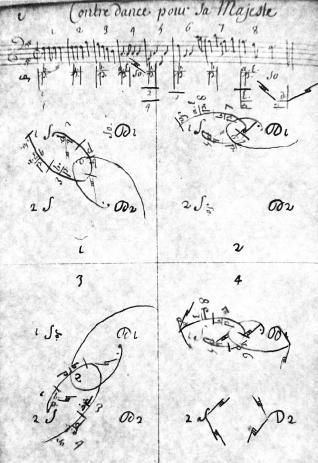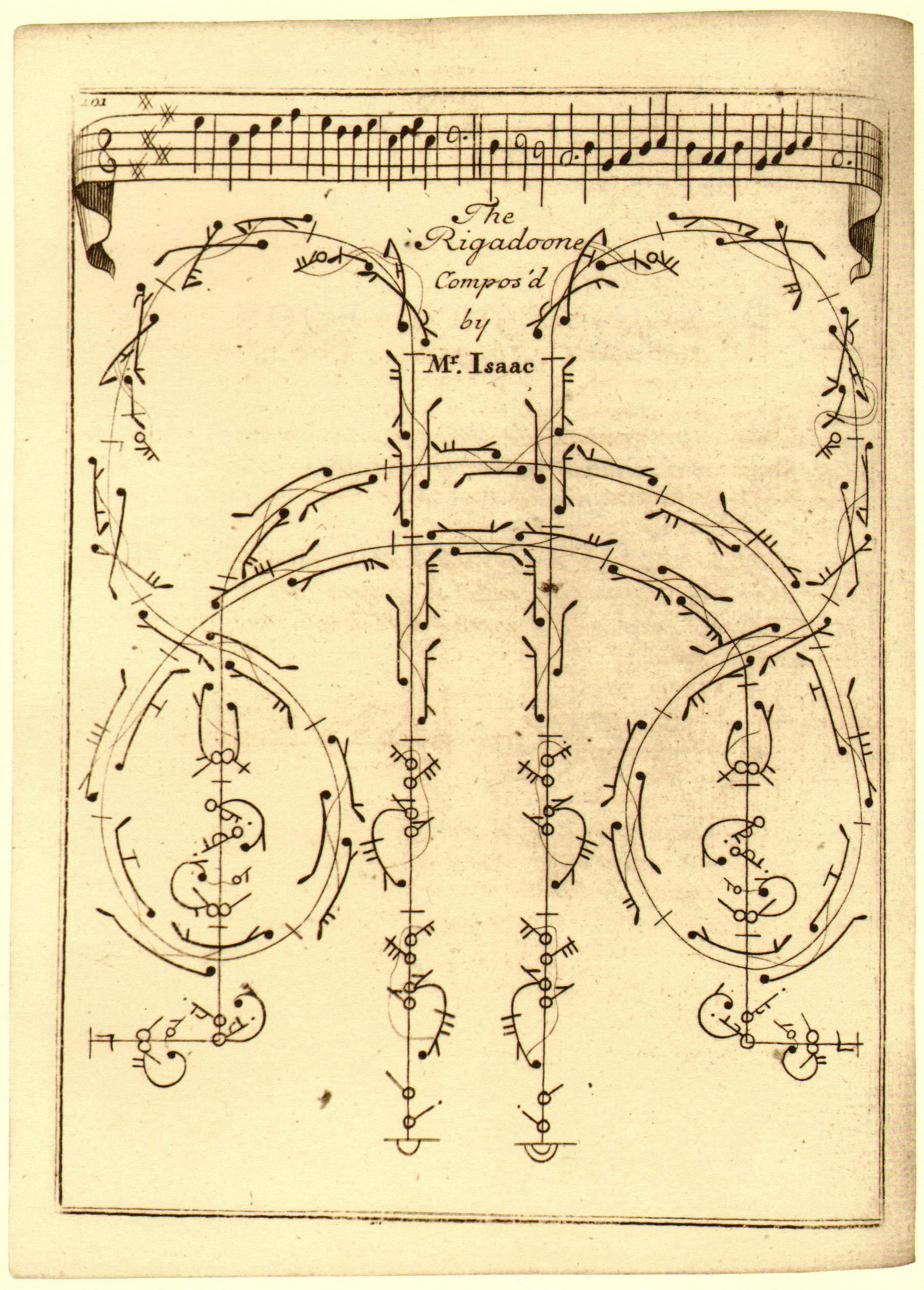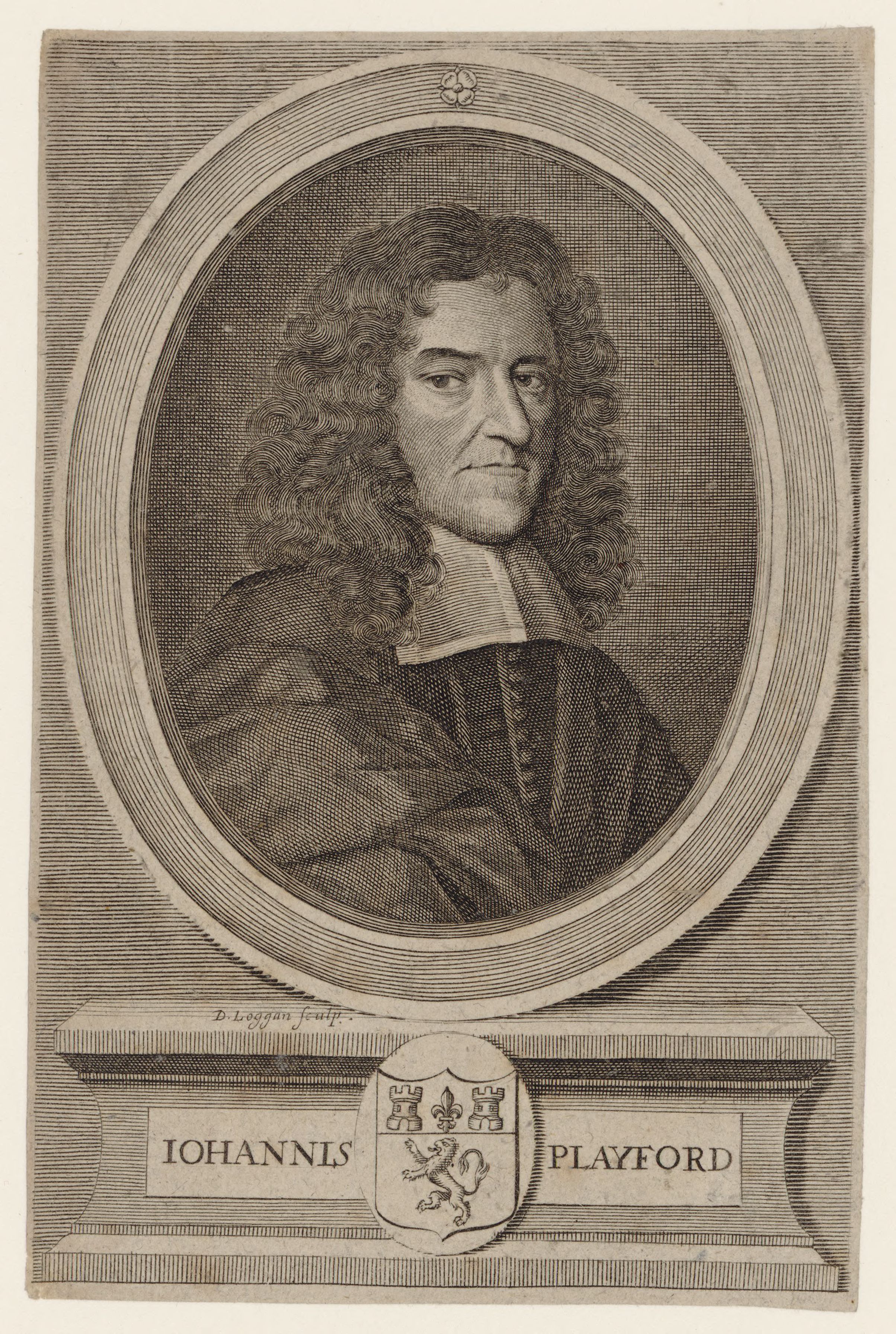|
Contradanse
A country dance is any of a very large number of social dances of a type that originated in the British Isles; it is the repeated execution of a predefined sequence of figures, carefully designed to fit a fixed length of music, performed by a group of people, usually in couples, in one or more sets. The figures involve interaction with your partner and/or with other dancers, usually with a progression so that you dance with everyone in your set. It is common in modern times to have a "caller" who teaches the dance and then calls the figures as you dance. Country dances are done in many different styles. As a musical form written in or time, the contredanse was used by Beethoven and Mozart. Introduced to South America by French immigrants, Country Dance had great influence upon Latin American music as contradanza. The ''Anglais'' (from the French word meaning "English") or ''Angloise'' is another term for the English country dance. A Scottish country dance may be termed an . ... [...More Info...] [...Related Items...] OR: [Wikipedia] [Google] [Baidu] |
Ă©cossaise
The Écossaise (in French, "Scottish") is a musical form and a type of contradanse in a Scottish style – a Scottish country dance at least in name – that was popular in France and Great Britain at the end of the 18th century and at the beginning of the 19th. Despite the Écossaise mimicking a Scottish country dance, it is actually French in origin. The écossaise was usually danced in 2/4 time in two lines, with men facing the women. As the dance is executed, couples progress to the head of the line. Écossaise compositions were mainly written for solo piano, so that couples could dance to it. The musical form was also adopted by some classical composers, including Ludwig van Beethoven, (WoO 83 and WoO 86 for piano and WoO 22 and WoO 23, now lost, for military band); Franz Schubert, (D.145, 158, 299, 421, 511, 529, 643, 697, 734, 735, 781, 782, 783, 816, and 977); Frédéric Chopin (Op. 72 number 3) and Cécile Chaminade's ''Écossaise,'' Op. 151. This music usually includes ... [...More Info...] [...Related Items...] OR: [Wikipedia] [Google] [Baidu] |
Contradanza
''Contradanza'' (also called ''contradanza criolla'', ''danza'', ''danza criolla'', or ''habanera'') is the Spanish and Spanish-American version of the contradanse, which was an internationally popular style of music and dance in the 18th century, derived from the Country dance, English country dance and adopted at the court of France. Contradanza was brought to America and there took on folkloric forms that still exist in Bolivia, Mexico, Venezuela, Colombia, Peru, Panama and Ecuador. In Cuba during the 19th century, it became an important genre, the first written music to be rhythmically based on an Rhythm in Sub-Saharan Africa, African rhythm pattern and the first Cuban dance to gain international popularity, the progenitor of danzón, mambo (music), mambo and cha-cha-chá (music), cha-cha-cha, with a characteristic "habanera rhythm" and sung lyrics. Outside Cuba, the Cuban contradanza became known as the ''habanera'' – the dance of Havana – and that name was adopted in ... [...More Info...] [...Related Items...] OR: [Wikipedia] [Google] [Baidu] |
A Country Dance In A Long Hall; The Elegance Of The Couple O Wellcome V0049213
A, or a, is the first letter and the first vowel of the Latin alphabet, used in the modern English alphabet, the alphabets of other western European languages and others worldwide. Its name in English is ''a'' (pronounced ), plural ''aes''. It is similar in shape to the Ancient Greek letter alpha, from which it derives. The uppercase version consists of the two slanting sides of a triangle, crossed in the middle by a horizontal bar. The lowercase version can be written in two forms: the double-storey a and single-storey É‘. The latter is commonly used in handwriting and fonts based on it, especially fonts intended to be read by children, and is also found in italic type. In English grammar, " a", and its variant " an", are indefinite articles. History The earliest certain ancestor of "A" is aleph (also written 'aleph), the first letter of the Phoenician alphabet, which consisted entirely of consonants (for that reason, it is also called an abjad to distinguish it fro ... [...More Info...] [...Related Items...] OR: [Wikipedia] [Google] [Baidu] |
Ballroom Dance
Ballroom dance is a set of partner dances, which are enjoyed both socially and competitively around the world, mostly because of its performance and entertainment aspects. Ballroom dancing is also widely enjoyed on stage, film, and television. ''Ballroom dance'' may refer, at its widest definition, to almost any recreational dance with a partner. However, with the emergence of dance competition (now known as Dancesport), two principal schools have emerged and the term is used more narrowly to refer to the dances recognized by those schools. * The International School, originally developed in EnglandFranks A.H. 1963. ''Social dance: a short history''. Routledge & Kegan Paul, London. and now regulated by the World Dance CouncilWDC and the World DanceSport FederationWDSF, is most prevalent in Europe. It encompasses two categories, Standard and Latin, each of which consist of five dances—International Waltz, International Tango, International Viennese Waltz, International Slow F ... [...More Info...] [...Related Items...] OR: [Wikipedia] [Google] [Baidu] |
Beauchamp-Feuillet Notation
Beauchamp–Feuillet notation is a system of dance notation used in Baroque dance. The notation was commissioned by Louis XIV (who had founded the AcadĂ©mie Royale de Danse in 1661), and devised in the 1680s by Pierre Beauchamp. The notation system was first described in detail in 1700 by Raoul-Auger Feuillet in ''ChorĂ©graphie''. Feuillet also then began a programme of publishing complete notated dances. It was used to record dances for the stage and domestic use throughout the eighteenth century, being modified by Pierre Rameau in 1725, and surviving into at least the 1780s in various modified forms. One of the innovations of this notation, as you can see in the sample below, was to show the music, on a staff as a musician would use it, across the top of a page. The roles of the dancer or dancers, the tract they were to follow, and the steps to perform are shown in the notation below. The bar markings on the music are also drawn across the tract of the dancers, clarifyin ... [...More Info...] [...Related Items...] OR: [Wikipedia] [Google] [Baidu] |
Raoul Auger Feuillet
Raoul Auger (or Anger) Feuillet (c.1660–1710) was a French dance notator, publisher and choreographer most well-known today for his ''ChorĂ©graphie, ou l'art de dĂ©crire la danse'' (Paris, 1700) which described Beauchamp–Feuillet notation, and his subsequent collections of ballroom and theatrical dances, which included his own choreographies as well as those of PĂ©cour. His ''ChorĂ©graphie'' (1700) was translated into English by John Weaver (as ''Orchesography. Or the Art of Dancing'') (1706) and P. Siris (as ''The Art of Dancing''), both published in 1706. Weaver also translated the ''TraitĂ© de la cadance'' from Feuillet's 1704 ''RecĹeil de dances'' (as ''A Small Treatise of Time and Cadence in Dancing'', 1706). Feuillet's ''RecĹeil de contredances'' (1706), a collection of English country dances, was translated into English by John Essex (as ''For the Furthur Improvement of Dancing'', 1710).Essex, John (1710''For the Furthur Improvement of Dancing'' References E ... [...More Info...] [...Related Items...] OR: [Wikipedia] [Google] [Baidu] |
Louis XIV
, house = Bourbon , father = Louis XIII , mother = Anne of Austria , birth_date = , birth_place = Château de Saint-Germain-en-Laye, Saint-Germain-en-Laye, France , death_date = , death_place = Palace of Versailles, Versailles, France , burial_date = 9 September 1715 , burial_place = Basilica of Saint-Denis , religion = Catholicism (Gallican Rite) , signature = Louis XIV Signature.svg Louis XIV (Louis Dieudonné; 5 September 16381 September 1715), also known as Louis the Great () or the Sun King (), was King of France from 14 May 1643 until his death in 1715. His reign of 72 years and 110 days is the longest of any sovereign in history whose date is verifiable. Although Louis XIV's France was emblematic of the age of absolutism in Europe, the King surrounded himself with a variety of significant political, military, and cultural figures, such as Bossuet, Colbert, Le Brun, Le Nôtre, Lully, Mazarin, Molière, Racine, Turenne, ... [...More Info...] [...Related Items...] OR: [Wikipedia] [Google] [Baidu] |
The English Dancing Master
''The Dancing Master'' (first edition: ''The English Dancing Master'') is a dancing manual containing the music and instructions for English country dances. It was first published in 1651 by John Playford. History It was published in several editions by John Playford and his successors from 1651 until . The first edition contained 105 dances with single-line melodies. The 1651 book ''The Dancing Master'' by John Playford had been designed for teaching dancing. It was originally small so that the dancing master could hide it under his cloak and consult it surreptitiously. Subsequent editions introduced new songs and dances, while dropping others, and the work eventually encompassed three volumes. Dances from ''The Dancing Master'' were re-published in arrangements by Cecil Sharp in the early 20th century. In 1957 Margaret Dean Smith completed her facsimile book ''Playford's English Dancing Master''. This work had been the first publication of English dance tunes and her publi ... [...More Info...] [...Related Items...] OR: [Wikipedia] [Google] [Baidu] |
John Playford
John Playford (1623–1686/7) was a London bookseller, publisher, minor composer, and member of the Stationers' Company, who published books on music theory, instruction books for several instruments, and psalters with tunes for singing in churches. He is perhaps best known today for his publication of ''The English Dancing Master'' in 1651. Biography Playford was born in Norwich, the younger son of John Playford. He served an apprenticeship in London with publisher John Benson from 1639/40 to 1647, after which he remained in the capital, opening a shop in the porch of Temple Church. Playford was clerk to the church, and probably resided with his wife Hannah over the shop until 1659. He was, it appears (from the title-pages of his publications) temporarily in partnership with John Benson in 1652, and with Zachariah Watkins in 1664 and 1665. Under the Commonwealth (1649–60), and for some years of Charles II's reign, Playford almost monopolised the business of music pu ... [...More Info...] [...Related Items...] OR: [Wikipedia] [Google] [Baidu] |
Journal Of The English Folk Dance And Song Society
The English Folk Dance and Song Society (EFDSS, or pronounced 'EFF-diss') is an organisation that promotes English folk music and folk dance. EFDSS was formed in 1932 when two organisations merged: the Folk-Song Society and the English Folk Dance Society.Karpeles, Maud and Frogley, Alain (2007–2011)'English Folk Dance and Song Society' In: ''Grove Music Online'', Oxford Music Online. Retrieved 24 October 2011. . The EFDSS, a member-based organisation, was incorporated in 1935 and became a registered charity in 1963. History The Folk-Song Society, founded in London in 1898, focused on collecting and publishing folk songs, primarily of Britain and Ireland although there was no formal limitation. Participants included: Lucy Broadwood, Kate Lee, Cecil Sharp, Percy Grainger, Ralph Vaughan Williams, George Butterworth, George Gardiner, Henry Hammond, Anne Gilchrist, Mary Augusta Wakefield, and Ella Leather. The English Folk Dance Society was founded in 1911 by Cecil Sharp. Maud ... [...More Info...] [...Related Items...] OR: [Wikipedia] [Google] [Baidu] |
Italian Renaissance
The Italian Renaissance ( it, Rinascimento ) was a period in Italian history covering the 15th and 16th centuries. The period is known for the initial development of the broader Renaissance culture that spread across Europe and marked the transition from the Middle Ages to modernity. Proponents of a "long Renaissance" argue that it started around the year 1300 and lasted until about 1600. In some fields, a Proto-Renaissance, beginning around 1250, is typically accepted. The French word ''renaissance'' (corresponding to ''rinascimento'' in Italian) means 'rebirth', and defines the period as one of cultural revival and renewed interest in classical antiquity after the centuries during what Renaissance humanists labelled as the "Dark Ages". The Renaissance author Giorgio Vasari used the term ''rinascita'' 'rebirth' in his '' Lives of the Most Excellent Painters, Sculptors, and Architects'' in 1550, but the concept became widespread only in the 19th century, after the work of schola ... [...More Info...] [...Related Items...] OR: [Wikipedia] [Google] [Baidu] |







